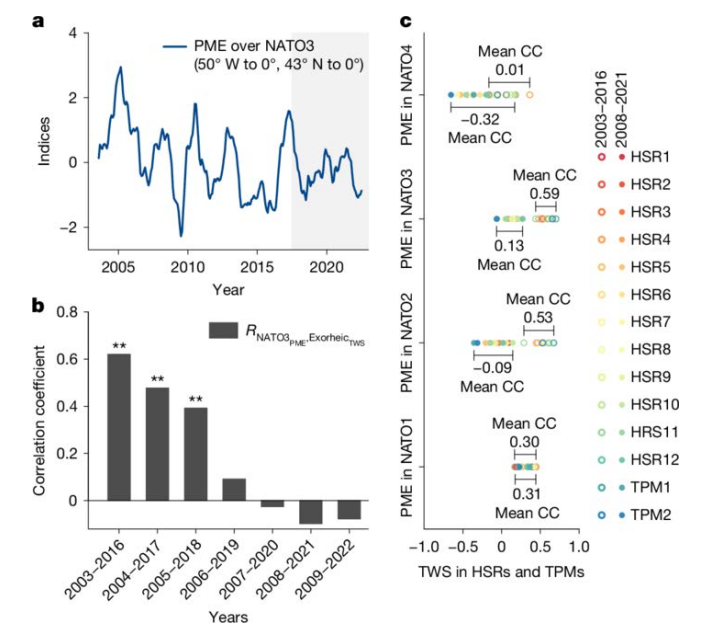
On February 20, Dr. Zhao Yutong from the Institute of Tibetan Plateau Research, Chinese Academy of Sciences, published an academic commentary in “Matters Arising” section of Nature journal, challenging a 2023 study published in the same journal that suggested Atlantic meteorological droughts threaten the water resource security of the Tibetan Plateau. Dr. Zhao Yutong argued that Atlantic meteorological droughts do not pose a threat to the water resource security of the Tibetan Plateau.
Known as the “Asian Water Tower”, the Tibetan Plateau provides a robust safeguard for water resource demands in the surrounding Himalayan region. Under global warming, the Tibetan Plateau is undergoing significant changes, and how it will evolve in the future is a critical scientific issue concerning the sustainable development of the Himalayan region. The 2023 study published in Nature claimed that meteorological droughts in the North Atlantic (where evaporation exceeds precipitation) triggered a significant decline in terrestrial water storage on the Tibetan Plateau between 2003 and 2016. Based on this, the study further predicted that this declining trend would intensify in the future, posing severe challenges to the water resource security.
Dr. Zhao Yutong argued that the two key pieces of evidence supporting the aforementioned conclusions are untenable. First, the authors of the original study used a water vapor tracking model to suggest that the North Atlantic transports substantial water vapor to the Tibetan Plateau via mid-latitude westerlies, contributing significantly to its annual precipitation. This finding contradicts observations from water vapor stable isotopes, which identify the Indian Ocean monsoon as the primary source of water vapor, and is also inconsistent with results from other water vapor tracking models. The commentary pointed out that the original study overlooked the process of water vapor deposition along its trajectory, thereby exaggerating the contribution from Atlantic. For example, neglecting this process resulted in the flawed conclusion that the Sahara Desert in North Africa contributes more moisture to the precipitation of the “Asian Water Tower” than the Indian Ocean.
Furthermore, while a significant negative correlation was observed between North Atlantic meteorological droughts and changes in terrestrial water storage on the Tibetan Plateau from 2003 to 2016, the teleconnection between the Atlantic and the Tibetan Plateau is temporally unstable. A sliding window analysis revealed that the significant correlation between the two completely disappeared from 2008 to 2021 (Figure 1). Therefore, the conclusion that future terrestrial water storage will continue to decline based on a statistical relationship lacking physical mechanisms is unreliable.
The commentary emphasized that traditional water vapor tracing models are inadequate for accurately capturing the complex three-dimensional water vapor transport and transformation processes over the plateau. It called for expanding the coverage of the water vapor observation network across the plateau and conducting detailed monitoring of vertical water vapor transport processes in key water vapor channel regions. By tracking the complete water cycle chain—including external water vapor transport, precipitation, evapotranspiration, and runoff—it would be possible to accurately analyze and predict the spatiotemporal evolution of water storage on the Tibetan Plateau.


